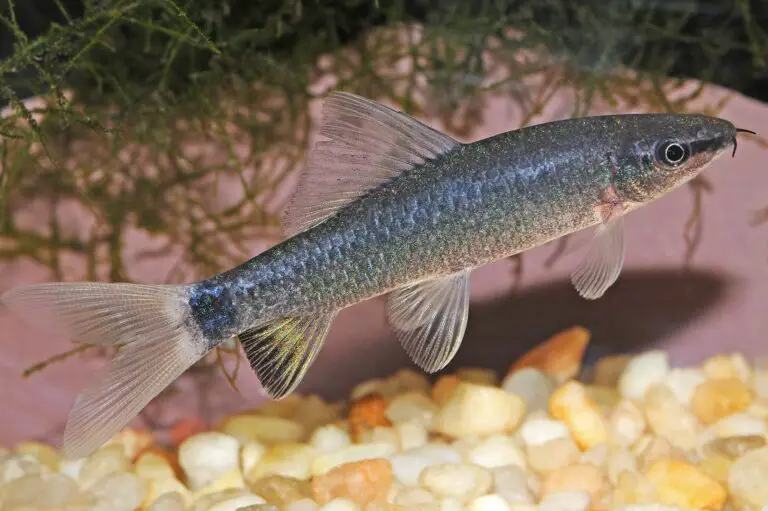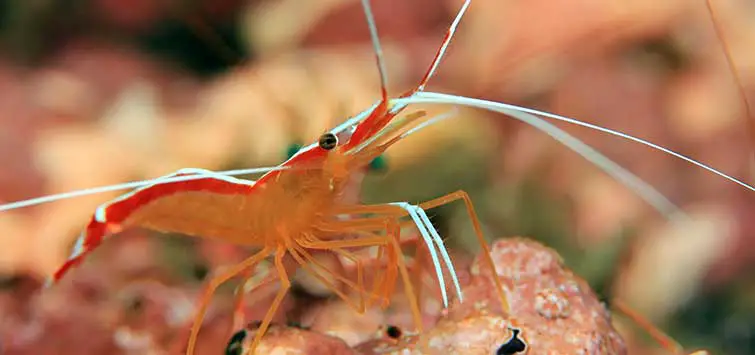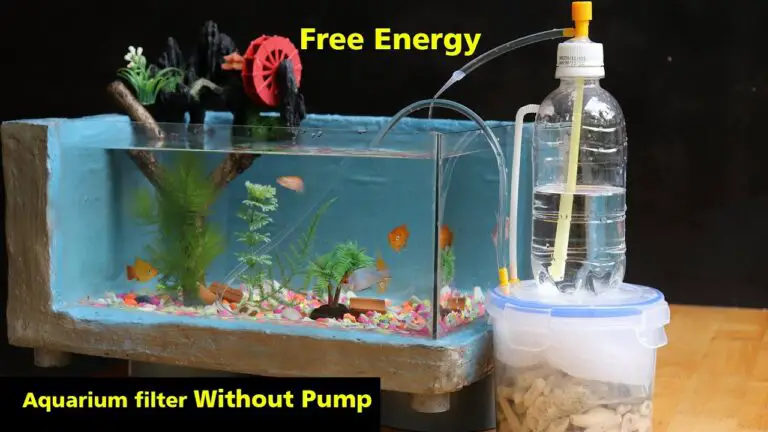What Level of Nitrite is Toxic to Fish: A Vital Guide
Freshwater species tread on thin ice when nitrite concentrations reach 0.1 mg/L or higher. These levels are considered dangerous for their well-being.
Saltwater species, being a tad more resilient, can tolerate slightly higher nitrite levels, up to 0.2 mg/L.
Nitrites play the villain by disrupting the oxygen-carrying capacity of a fish’s blood. Imagine a fish gasping for breath despite an abundance of oxygen in the water!
Suffocation becomes an unwelcome guest when nitrite levels rise.
Nitrites are toxic, and their potency defies their seemingly harmless nature. Even tiny amounts can spell doom for our aquatic companions.
The most common cause of nitrite poisoning in aquariums? It’s the conversion of ammonia (another aquatic troublemaker) into nitrite.
To shield your beloved fish from nitrite’s wrath, maintain nitrite levels below 0.3 parts per million (ppm).
Anything beyond this threshold can be fatal for many fish species. Vigilance is key!
Remember, a vigilant aquarist is a fish’s best friend. Keep those nitrite levels in check, and your aquatic buddies will thank you with their graceful underwater dances!
Can Fish Recover from Nitrite Poisoning?
Nitrite poisoning occurs when fish swim in waters with elevated nitrite levels. These tiny molecules wreak havoc on aquatic health.
Symptoms include difficulty breathing, loss of appetite, and a general sense of lethargy. Left untreated, it’s a grim prognosis for our finned friends.
Swift action is the key. If you catch nitrite poisoning early:
Water Conditioning: Properly condition your aquarium water. Regular water changes help dilute nitrite concentrations.
Monitor Nitrate and Ammonia Levels: Keep a close eye on these parameters. Detect issues before they escalate.
Nitrite Detox Strategies:
Activated Charcoal or Purigen: These carbon sources work like magic, removing unwanted toxins (including nitrates) from your aquarium environment.
Well-Maintained Tank: Regular substrate vacuuming and filter cleaning contribute to a healthy aquatic ecosystem.
Is 1.0 Nitrite Bad for Fish?
Affirmatively, a nitrite concentration of 1.0 PPM can indeed pose a threat to fish. When nitrite levels surge, it can lead to a condition known as oxygen deprivation, which can induce stress in fish and, in severe cases, cause their demise.
An abundance of nitrites can also exhaust the existing oxygen supply in the aquarium, complicating the breathing process for fish and hindering their ability to assimilate crucial nutrients from their diet.
This situation can weaken their immune defenses, leaving them vulnerable to a variety of ailments such as cloudy eyes, fin rot, flukes, ich, among others.
Hence, it is of utmost importance for those maintaining aquariums to regularly monitor nitrite levels to ensure any harmful changes in water quality are promptly detected.
If an unusual increase in nitrite levels is observed, immediate remedial actions should be implemented.
These could include enhancing the tank’s aeration or carrying out periodic partial water replacements with clean, filtered water.
Such measures will aid in reducing the nitrite content in the aquarium, thereby fostering a safer and healthier environment for the resident aquatic species, including fish.
How to Reduce Nitrite Levels in Aquarium?
To manage nitrite levels in your aquarium, regular water changes, the use of a nitrate filter, and avoiding overpopulation in the tank are essential.
It’s recommended to change the water at least biweekly to eliminate accumulated waste and enhance oxygen levels.
Employing a nitrate filter can assist in decreasing the nitrogen content in the water and provide biological filtration, which decomposes organic matter into harmless substances.
Finally, overstocking your tank with an excessive number of fish or other aquatic life can lead to elevated nitrite levels due to the increase in waste production.
Therefore, it’s crucial to understand the requirements of each species before introducing them to your aquarium to prevent these issues.
Signs of Nitrite Poisoning in Fish
Nitrite toxicity is a prevalent issue in aquariums, identifiable by various symptoms.
Fish may exhibit signs of difficulty in breathing, general sluggishness, darkening of their skin or gills, or issues with buoyancy.
If nitrite levels in your aquarium’s water have escalated to hazardous levels, it’s imperative to take immediate remedial measures to reestablish a safe environment for your fish.
How Long Can Fish Live With High Nitrites?
Fish can be adversely affected by nitrite toxicity if nitrite concentrations in the water escalate excessively.
While fish can typically endure prolonged exposure to elevated nitrite levels, their lifespan may be shortened as a result.
Nitrite poisoning is a frequent cause of mortality in both aquarium and pond fish, underscoring the importance of vigilant monitoring of your tank’s chemical balance and swift intervention if unusually high nitrite levels are observed.
Is 0.5 PPM Nitrite Bad?
Nitrite levels in an aquarium can be managed by regular water changes, using a nitrate filter, and avoiding overstocking.
High nitrite levels can stress fish and cause diseases. If nitrite exceeds 0.5 ppm, take immediate action like water changes, reducing feeding, adding live plants, using nitrite neutralizers, increasing aeration, and adding beneficial bacteria.
Regular monitoring and maintenance are key to a healthy aquarium.
Is 0.25 PPM Nitrite Bad?
While 0.25 ppm nitrite isn’t ideal for aquariums, it’s not necessarily detrimental either.
Nitrite, a toxic compound, can harm aquatic life in high amounts.
However, a nitrite level of 0.25 ppm could suggest the existence of beneficial bacteria that contribute to a clean and healthy tank.
If nitrite levels reach or exceed 0.25 ppm, it’s important to regularly test the water and take necessary measures to lower the concentration.
Safe Nitrate Levels in Aquarium
The acceptable nitrate levels in an aquarium are contingent on the species of fish you house and their preferred environment.
Typically, a safe range is between 0-20 ppm (parts per million).
Levels exceeding 40ppm can induce stress in your fish, potentially causing sickness and even fatality.
Maintaining appropriate nitrate levels is crucial for your fish’s health and the overall equilibrium of your tank.
Regular water assessments with a reliable test kit will help you sustain the ideal nitrate levels for your aquarium dwellers.
What Causes High Nitrite Levels in Fish Tank?
A multitude of factors can contribute to elevated nitrite levels in aquariums.
Common causes include overpopulation, excessive feeding, and subpar water conditions, as these can result in a surge of organic waste.
This waste is then converted into nitrites by helpful bacteria.
Moreover, fish tanks lacking efficient filtration or circulation systems may struggle to eliminate nitrate from the water.
Lastly, if the tank’s oxygenation is inadequate due to insufficient aeration or too many fish, it hampers the ability of beneficial bacteria to effectively decompose nitrogenous compounds, thereby leading to increased nitrite levels.
NO2 And NO3 Levels in Aquarium
The nitrogen cycle is essential to the health of any aquarium, and nitrites (NO2) and nitrates (NO3) are two important components.
Nitrite levels should remain low in an aquarium, while some level of nitrate is necessary for healthy plant growth.
Excessively high nitrite or nitrate levels can lead to algae blooms and other issues, so it’s important to monitor your NO2 and NO3 levels regularly using a reliable test kit.
Regular water changes can help maintain these chemical balances as well.
Conclusion
This blog post has demonstrated that nitrite is toxic to fish and can cause serious health problems if the level rises above 0.5 ppm.
It is important for aquarium owners to monitor nitrite levels in order to ensure their fish remain healthy and happy.
Regular water changes, using a quality filter, and adding beneficial bacteria are all ways of keeping nitrite levels low while maintaining an aquatic ecosystem suitable for your fish.
It is up to you as an aquarist owner to keep your tank safe by regularly checking your tank’s parameters.




